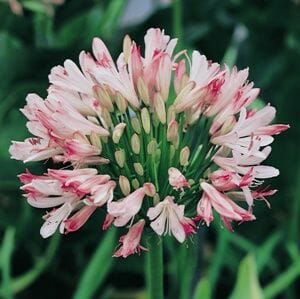Agapanthus Companion Plant Kingdoms: Perfect Pairings for Your Yard
Wiki Article
Understanding the Art of Agapanthus Treatment: Necessary Actions for Healthy And Balanced Growth and Vibrant Blossoms
In the world of cultivation, the cultivation of agapanthus stands as a rewarding undertaking for those who look for to nurture these sophisticated flowering plants. With their striking blooms and stylish foliage, agapanthus has actually caught the attention of garden enthusiasts worldwide. Nevertheless, achieving optimum development and lively blooms requires a nuanced technique that incorporates various crucial steps. From picking the best variety to understanding pruning strategies, the trip in the direction of cultivating prospering agapanthus plants is diverse and holds the vital to opening the full possibility of these agricultural treasures.
Picking the Right Agapanthus Variety

When picking the ideal Agapanthus range for your garden, consider factors such as environment viability, flower color, and growth habit. Additionally, consider the environment in your area to guarantee the Agapanthus selection you pick can grow in your certain conditions. Understanding the development behavior of various Agapanthus ranges is essential for proper positioning within your yard.
Ideal Growing Problems
Taking into consideration the optimal ecological requirements is necessary for successful Agapanthus farming. Agapanthus plants are sensitive to chilly temperature levels and should be secured from frost throughout winter months.To make sure healthy and balanced development and lively blossoms, plant Agapanthus light bulbs at a deepness of about 2-4 inches and room them 8-12 inches apart. Adding raw material, such as compost, to the soil can boost drainage and fertility, promoting durable origin development. Mulching around the base of the plants assists retain wetness and suppresses weed growth. Regular watering is essential, particularly during the growing season, to keep the soil consistently moist yet not saturated.
Watering and Fertilizing Tips
Preserving appropriate wetness levels and providing essential nutrients are vital components in the care regimen for Agapanthus plants. When it comes to sprinkling Agapanthus, it is critical to strike a balance. These plants favor constantly wet soil yet are susceptible to root rot if overwatered.Feeding Agapanthus is important for advertising healthy and balanced development and respected blooms. Apply a balanced fertilizer, such as a 10-10-10 formula, in the very early spring as new growth arises. By following these watering and fertilizing suggestions, you can ensure your Agapanthus plants prosper and generate vivid, lasting flowers.
Pruning Methods for Agapanthus
Pruning Agapanthus plants at the proper times and with correct strategies is crucial for maintaining their health and promoting optimal growth and flowering. The perfect time to prune Agapanthus is in late winter season or early spring before new growth emerges. Start by removing any yellowing or dead leaves near the base of the plant. Cut them as short as feasible without damaging the emerging shoots.For flowered stems, wait till the blossoms have withered and after that trim them back to the base. This not just cleans the plant's look but also urges the advancement of new blossom buds. Deadheading invested flowers can additionally you could try these out reroute the plant's energy right into creating more blossoms instead than setting seeds. However, if you wish to collect seeds for breeding, leave some blossoms to completely dry and mature on the plant.
Keep in mind to utilize tidy, sharp tools to make accurate cuts and reduce the risk of presenting conditions. Agapanthus. Regular pruning will certainly assist maintain your Agapanthus looking cool and healthy and balanced while making sure a bountiful display screen of lovely blooms
Taking Care Of Usual Pests and Diseases
After guaranteeing appropriate trimming strategies for Agapanthus, it is important to deal with typical parasites and conditions that can impact the health and vitality of these plants. Agapanthus plants are generally hardy yet can still succumb to certain issues. One common bug that influences Agapanthus is the Agapanthus gall midge. This tiny, orange fly lays its eggs in the foliage, resulting in altered growth and flower buds that stop working to open. To fight this insect, trim and damage any affected plant parts and think about making use of insecticidal soap.One more common problem is fungal leaf area, which provides as dark lesions on the leaves. To avoid fungal diseases, make sure excellent air blood circulation around the plants, avoid above watering, and eliminate any contaminated fallen leaves promptly. Additionally, Agapanthus plants can deal with root rot if they are planted in poorly draining soil. To stop this, plant Agapanthus in well-draining dirt view it and prevent overwatering. By being attentive and taking punctual action against illness and pests, you can aid your Agapanthus plants prosper and produce dynamic blooms.

Conclusion
In verdict, mastering the art of agapanthus care includes picking the best range, giving perfect growing problems, proper watering and feeding, proper pruning methods, and resolving usual pests and illness. By adhering to these important actions, you can make certain healthy growth and lively blossoms for your agapanthus plants. Bear in mind to frequently keep track of their website and keep your plants to promote their overall wellness and durability.To make certain healthy growth and dynamic blooms, plant Agapanthus bulbs at a depth of regarding 2-4 inches and area them 8-12 inches apart. By adhering to these watering and feeding suggestions, you can ensure your Agapanthus plants flourish and produce dynamic, lasting blooms.
One common insect that impacts Agapanthus is the Agapanthus gall midget. Furthermore, Agapanthus plants can suffer from origin rot if they are planted in badly draining soil. By following these important steps, you can ensure healthy and balanced development and lively flowers for your agapanthus plants.
Report this wiki page